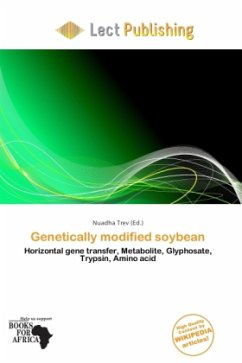Please note that the content of this book primarily consists of articles available from Wikipedia or other free sources online. Genetically modified soybean is a soybean (Glycine max) that has had DNA introduced into it in a way other than the combination of male and female gametes. This process may be carried out using recombinant DNA (rDNA) technology. As a widely planted and versatile crop, soybeans have become a popular subject of genetic modification. To modify a soybean s genetic makeup, the gene to be introduced into the soybean must first be isolated. If the gene does not display an obvious phenotype, or visible characteristic, a marker gene must be linked to it so the modified cells and unmodified cells can be distinguished. According to Dr. Peter Celec, a professor in the Slovakian Comenius University s Department of Molecular Biology, the marker genes typically confer resistance to a selective agent, often an antibiotic, so the unmodified cells can easily be killed offto leave only modified cells behind, and the other [gene] is meant to confer a desirable phenotype, which is often agronomic (herbicide, pest, stress resistance) or related to food quality (shelf-life, taste, nutritional value).
Bitte wählen Sie Ihr Anliegen aus.
Rechnungen
Retourenschein anfordern
Bestellstatus
Storno








